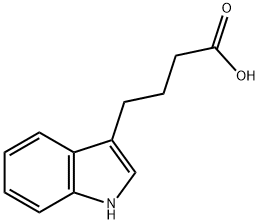The Versatile Role of a Plant Growth Regulator: An Overview of Indole-3-butyric Acid's Applications and Significance
Abstract
Indole-3-butyric acid, a naturally occurring plant growth regulator, holds immense importance in various horticultural and agricultural practices. This comprehensive review aims to delve into the diverse applications of it, highlighting its pivotal role in promoting root development, enhancing transplant survival, and improving overall plant growth and yield. By examining the underlying mechanisms, practical implementations, and the latest research advancements, this overview underscores the versatility, efficacy, and value of indole-3-butyric acid in modern plant cultivation.
Introduction
Indole 3-butyric acid (IBA) is an auxin precursor that is converted to IAA in a peroxisomal β-oxidation process. In Arabidopsis, altered IBA-to-IAA conversion leads to multiple plant defects, indicating that IBA contributes to auxin homeostasis in critical ways. Like IAA, IBA and its conjugates can be transported in plants, yet many IBA carriers still need to be identified.1

Promoting Root Development
One of the primary and most well-known applications of indole-3-butyric acid lies in its remarkable ability to stimulate root development. When applied to cuttings or seedlings, this compound significantly enhances root initiation and growth, leading to improved establishment and survival rates. This property is particularly valuable in horticultural practices, where rapid and efficient rooting is crucial for the successful propagation and cultivation of a wide range of plant species.
Enhancing Transplant Survival
It also plays a vital role in enhancing the survival of transplanted plants. By promoting root regeneration and nutrient absorption, this compound helps transplanted plants recover more quickly from the stress of relocation, ultimately improving overall survival rates. This application is especially relevant in large-scale agricultural settings, where transplant shock can significantly impact crop yields and overall productivity.2
Improving Plant Growth and Yield
Beyond its root-promoting effects, indole-3-butyric acid has been extensively studied for its positive influence on overall plant growth and yield. By optimizing nutrient utilization, enhancing photosynthetic efficiency, and modulating plant hormone levels, this compound contributes to healthier, more vigorous plants with increased biomass and yield potential. These benefits extend to a wide range of horticultural and agricultural crops, making it a highly valued addition to any grower's toolkit.3
Mechanisms of Action
Indole 3-Butyric Acid(IBA) was initially assumed to be a synthetic auxinic compound that was primarily used as a rooting media agent. In marigold, tomato, buckwheat, pea, bean, sunflower, and few other plant species, exogenous IBA induces root elongation, leaf epinasty, and stem bending. Although IBA was once thought to be a synthetic auxin, it was later detected as an endogenous compound in potato peelings using paper chromatography. Endogenous IBA has been detected in multiple plant species, including Arabidopsis, tobacco, pea, and maize. This widespread occurrence of IBA suggests that this molecule may play a conserved role across species.1
Preparation method
Preparation methods mainly include chemical synthesis methods, such as condensation of Indole with gamma-butylactone under specific conditions, or reaction of indole with Grignard reagent and α-chloro-propionitrile, and then hydrolysis and acidification.4
Latest Research and Advancements
Recent research has further expanded the understanding of indole-3-butyric acid's applications and mechanisms of action. Studies have explored its potential in biostimulant formulations, its role in stress tolerance and resilience, and its interactions with other plant growth regulators. These advancements highlight the ongoing interest and potential of indole-3-butyric acid in modern plant cultivation and agriculture.
References:
[1] SURESH DAMODARAN L C S. Indole 3-Butyric Acid Metabolism and Transport in Arabidopsis thaliana.[J]. Frontiers in Plant Science, 2019, 10. DOI:10.3389/fpls.2019.00851.[2] LUCIA C STRADER B B. Transport and metabolism of the endogenous auxin precursor indole-3-butyric acid.[J]. Molecular Plant, 2011, 4 3. DOI:10.1093/mp/ssr006.
[3] A C NORDSTR?M L E F A Jacobs. Effect of Exogenous Indole-3-Acetic Acid and Indole-3-Butyric Acid on Internal Levels of the Respective Auxins and Their Conjugation with Aspartic Acid during Adventitious Root Formation in Pea Cuttings.[J]. Plant Physiology, 1991, 96 3. DOI:10.1104/pp.96.3.856.
[4] LUCIA C STRADER. Multiple facets of Arabidopsis seedling development require indole-3-butyric acid-derived auxin.[J]. ACS Central Science, 2011. DOI:10.1105/tpc.111.083071.
You may like
See also
Lastest Price from Indole-3-butyric acid manufacturers

US $0.00-0.00/kg2025-09-18
- CAS:
- 133-32-4
- Min. Order:
- 25kg
- Purity:
- 98%
- Supply Ability:
- 10MT

US $1.00/PCS2025-06-26
- CAS:
- 133-32-4
- Min. Order:
- 1PCS
- Purity:
- 99%
- Supply Ability:
- 100mt


